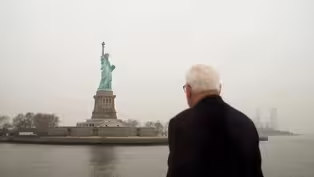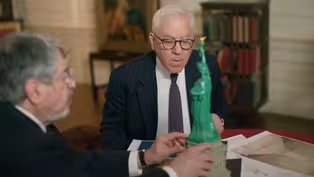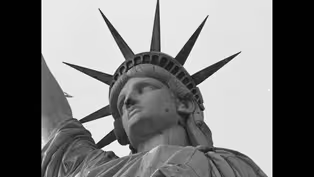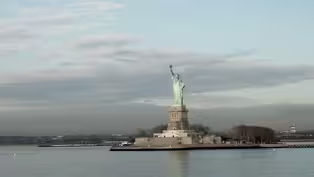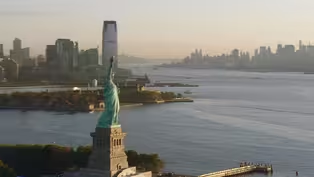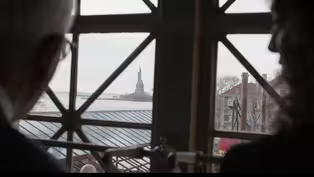
The French Connection
Clip: Episode 5 | 3m 56sVideo has Closed Captions
America's greatest symbol has its roots in a small town in France, 300 miles from Paris.
America's greatest symbol has its roots in a small town in France, about 300 miles from Paris, where Bartholdi was born and first conceived of his vision for the statue. There is no better way to understand the statue's evolution than to go where it all began.
Problems playing video? | Closed Captioning Feedback
Problems playing video? | Closed Captioning Feedback
Iconic America: Our Symbols and Stories with David Rubenstein is a production of Show of Force, DMR Productions, and WETA Washington, D.C. David M. Rubenstein is the host and executive...

The French Connection
Clip: Episode 5 | 3m 56sVideo has Closed Captions
America's greatest symbol has its roots in a small town in France, about 300 miles from Paris, where Bartholdi was born and first conceived of his vision for the statue. There is no better way to understand the statue's evolution than to go where it all began.
Problems playing video? | Closed Captioning Feedback
How to Watch Iconic America
Iconic America is available to stream on pbs.org and the free PBS App, available on iPhone, Apple TV, Android TV, Android smartphones, Amazon Fire TV, Amazon Fire Tablet, Roku, Samsung Smart TV, and Vizio.
Buy Now
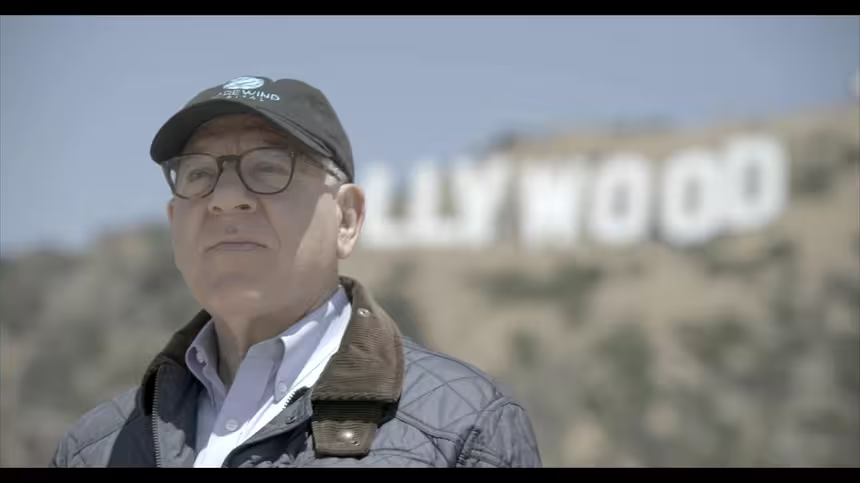
Our Symbols and Stories
David Rubenstein examines the history of America through some of its most iconic symbols, objects and places, in conversation with historical thinkers, community members and other experts. Together, they dive deep into each symbol’s history, using them as a gateway to understanding America’s past and present.Providing Support for PBS.org
Learn Moreabout PBS online sponsorship(bright music) - America's greatest symbol has its roots in a small town in France, about 300 miles from Paris, where Bartholdi was born and first conceived of his vision for the statue.
There is no better way to understand the statue's evolution than to go where it all began.
(light orchestral music) So this is the replica of the Statue of Liberty.
It was erected here to honor Auguste Bartholdi.
He was born in this city.
Where this is now located appears to be a transportation and logistics center because every truck coming by in the world seems to be here, but it looks exactly like the one in New York Harbor down to the chains at the feet, and we can see them here very closely.
So, they erected a Statue of Liberty right in a traffic circle area of the city.
Why did they do that?
(Robert laughs) - I prefer not to comment on this decision because I don't think it is a very good decision.
It will be better to develop the Museum of Bartholdi in Colmar, but it's my own impression.
- Now, this museum was his original house.
This is where he was born, is that correct?
- Yeah, absolutely correct.
- [David] So you've been in this museum many times?
- [Robert] Yes, many times.
For my research to write my biography on Bartholdi.
The museum opened in 1922.
- [David] And it operated until World War II?
- [Robert] It was closed because of the German occupation, you see.
And Bartholdi was the symbol of French patriotism.
- [David] Yeah.
(gentle music) So in here we have the statue that was originally designed for the Suez Canal.
- Yes, you're right.
In 1869, in fact.
It was designed to be a lighthouse, but it was a model only because Isma'il Pasha, who was the Khedive of Egypt, has no more money to finance these statues.
- But this statue looks a little bit like the Statue of Liberty, doesn't it?
- Yes, absolutely.
And after this project, it has been reuse for the Statue of Liberty in New York, in fact.
- Wow.
And that right here is the first model of this?
- It is the very first model created in 1870, and the difference is the chain.
You know, the chain.
And after this model, you have the very first model with the tablets.
It's new from this one.
You have the chain and the tablets.
- [David] Very impressive.
- [Robert] Yeah, yes.
- [David] Now, what are the chains designed to symbolize?
- It symbolizes the fight against authoritarianism, fight against monarchy.
- [David] Some people say the chains are designed to symbolize the end of slavery in the United States.
Is that part of the symbolism as well?
- [Robert] Yeah.
The chains also symbolize slavery and the broken chains, the end of slavery.
But Bartholdi developed the idea, you see.
- [David] It was Laboulaye's idea to do something like this.
- Yes.
It was him who gave the idea one week after the assassination of Abraham Lincoln to imagine a very big symbol of the friendship between America and France.
(soft music)
A Catalyst for Reflection on Our Past Transgressions
Video has Closed Captions
Clip: Ep5 | 1m 6s | Poet Laureate Tracy K. Smith reflects on Lady Liberty's potential as an agent of change. (1m 6s)
How the Statue of Liberty's Anti-Slavery Origins Evolved
Video has Closed Captions
Clip: Ep5 | 3m 41s | A look at how Lady Liberty's anti-slavery origins and design changed over time. (3m 41s)
A Poem for All Americans, About Immigration
Video has Closed Captions
Clip: Ep5 | 55s | A look at how the poem, "The New Colossus" came to be engraved on the Statue of Liberty. (55s)
Video has Closed Captions
Preview: Ep5 | 31s | It's hard to argue that there's a more iconic symbol of America than the Statue of Liberty (31s)
Video has Closed Captions
Clip: Ep5 | 47s | David Rubenstein asks Professor Ed Berenson why Lady Liberty is a symbol of America. (47s)
"Their Immigration Story Becomes the Story of Their Life"
Video has Closed Captions
Clip: Ep5 | 2m 45s | David Rubenstein visits Ellis Island with Atlantic writer Caitlin Dickerson. (2m 45s)
Providing Support for PBS.org
Learn Moreabout PBS online sponsorshipSupport for PBS provided by:
Iconic America: Our Symbols and Stories with David Rubenstein is a production of Show of Force, DMR Productions, and WETA Washington, D.C. David M. Rubenstein is the host and executive...
